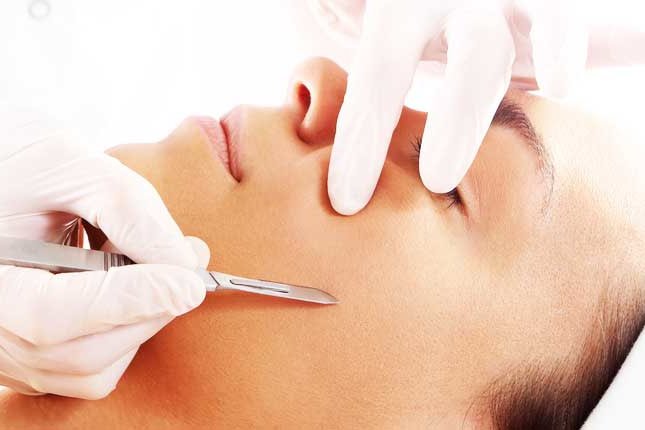What is Dermaplaning?
Dermaplaning, also known as epi-leveing, It is an exfoliating treatment, instead of using acid peels. Dermaplaning involves using a sterile scalpel or a special dermaplaning tool to gently scrape off the top layer of the skin. By doing so, it removes dead skin cells, peach fuzz, and any surface debris.
Why Choose Dermaplaning?
Dermaplaning provides an alternative to chemical peels or microdermabrasion and is a good choice for anyone who has fine facial hair, extremely sensitive skin, redness or rosacea, telangiectasia and is a great treatment to offer to patients who are pregnant or nursing who want a deep exfoliation, but are not allowed to use peeling agents on their skin. Removing epidermal skin also allows products to penetrate more readily into the deeper layers.
Physicians may recommend this treatment to prepare the skin for medical procedures such as laser treatments or deep chemical peels. It also may be used by your esthetician to prepare the skin for superficial chemical peels or before a cleansing facial.

Benefits of Dermaplaning
- Minimizes the appearance of fine lines and wrinkles
- Increases the skin’s ability to absorb products better
- Reduces the appearance of hyper-pigmentation
- Stimulates circulation
- Encourages normal shedding (desquamation) of the stratum corneum
- Improves hydration
- Can be used in combination with chemical peels and other facial treatments.
What to Expect During Dermaplaning
A typical dermaplaning session lasts about 20 to 30 minutes. The skin is first cleansed and dried. The practitioner then stretches an area of your skin taut and uses the scalpel to gently scrape off dead skin cells and hair. While it might sound intimidating, the procedure is painless, with most individuals describing the sensation as a light brushing against the skin.
Dermaplaning is most often used on patients with rough, dry skin, superficial hyperpigmentation, mild acne scarring, or fine lines and wrinkles. The treatment results in a more refined, smooth, “glowing” appearance.
Contraindications:
The only contraindications to dermaplaning include an allergy to nickel, numerous raised lesions on the skin
and inflamed acne.
Dermaplanning Aftercare and Maintenance
Post-procedure, it’s essential to take a few precautions to ensure optimal results:
Sun Protection: Freshly exfoliated skin can be more sensitive to the sun. It’s crucial to apply sunscreen diligently to protect the skin from UV rays.
Gentle Skincare: It’s advisable to avoid using harsh products or exfoliants for a few days after the treatment to prevent irritation.
Hydration: Keeping the skin moisturized can aid in the healing and rejuvenation process.
For maintenance, dermaplaning can be repeated every 3 to 4 weeks, depending on individual skin needs and the rate of hair growth.
Dermaplanning Summary
Dermaplaning is a safe and effective way to rejuvenate the skin, offering immediate results with minimal side effects. Whether you’re looking for a smoother makeup application, enhanced skincare product efficacy, or simply a radiant glow, dermaplaning might be the perfect solution. Contact MD Spa & Laser Clinic Today to discuss your treatment plan.













